National Trust Awards $3 Million in Grants to 40 Sites to Help Preserve Black History
2021 African American Cultural Heritage Action Fund Grant Recipients
On July 15, 2021, the National Trust for Historic Preservation announced more than $3 million in grants to 40 sites and organizations through its African American Cultural Heritage Action Fund.
Over the past four years, the National Trust has funded 105 historic places connected to Black history and invested more than $7.3 million to help preserve landscapes and buildings imbued with Black life, humanity, and cultural heritage. This year’s funds were awarded to key places and organizations that help the Action Fund protect and restore significant historic sites. Grants are given across four categories: capacity building, project planning, capital, and programming and interpretation.
Below, learn more about the full list of grantees.
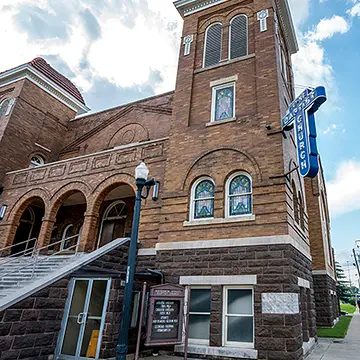
Alabama African American Civil Rights Consortium
(Birmingham, Alabama)
The Alabama African American Civil Rights Heritage Sites Consortium will create the position of Manager for External Relations to lead fundraising and communications and build its capacity to serve the state's civil rights sites.

Oakland Public Library
(Oakland, California)
The African American Museum and Library at Oakland needs structural repairs to its aging facility in order to protect the collection of documents related to Black history in California and the West.
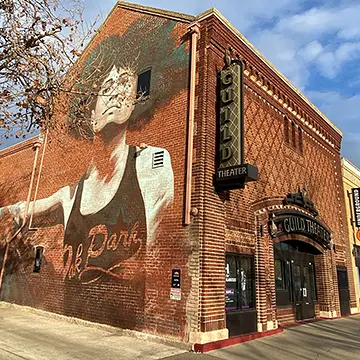
City of Sacramento
(Sacramento, California)
A citywide historic context and survey will be conducted to identify and interpret places that focus on the Black American experience in Sacramento from the city’s early history to the recent past.

Black American West Museum and Heritage Center
(Denver, Colorado)
Located in the former home of Dr. Justina Ford, the first African American doctor in Colorado, the Black American West Museum tells the stories of Black cowboys and early Black American communities and histories in the West. This grant will provide board training that shares the best governance practices for a viable, vibrant, and sustainable museum.

History Colorado
(Denver, Colorado)
History Colorado will plan, design, and implement a statewide African American Heritage Trail program that includes digital and place-based markers showcasing African American historical destinations and stories.

Asbury United Methodist Church
(Washington, DC)
Asbury UMC is notable for its association with the 1848 Pearl Incident, the largest nonviolent mass escape of enslaved persons in U.S. history, and more recently known as the site where trespassing protestors burned the church’s Black Lives Matter banner in 2020. The grant will enable repairs to the church’s wood windows and Bell Tower masonry as well as repointing and cleaning for its stone facade.
Historic Athens
(Athens, Georgia)
Historic Athens will create a new, full-time Director of Engagement and African American Heritage within Historic Athens that prioritizes public programming, community engagement, and preservation planning for the African American historic resources and community of Athens, Georgia

Georgia B. Williams Nursing Home
(Camilla, Georgia)
Midwives were critical to the health of Black mothers in the Jim Crow era when hospitals were segregated or nonexistent in some areas. This grant will help rehabilitate the Georgia B. Williams Nursing Home (birthing center) and create a Southern African-American Midwife Museum, interpretive center, and multi-use space.

Prince Hall Masonic Lodge
(Atlanta, Georgia)
Part of the Martin Luther King, Jr. National Historical Park, the Prince Hall Masonic Lodge is the former headquarters of the Southern Christian Leadership Conference, where Martin Luther King, Jr. maintained an office. The Lodge was also the location of a Madam C.J. Walker Beauty School and WERD, the first African American-owned and -programmed radio station. The grant will provide funding for a preservation plan to guide future restoration of the building’s character and condition.

Sapelo Island Cultural and Revitalization Society
(Sapelo, Georgia)
Developers and gentrification have long threatened Gullah Geechee land and cultural heritage. This grant will help seed a new emergency fund—known as the Gullah Geechee Legal Defense Fund—to assist Gullah property owners with retaining land ownership and fight forced sales from rising taxes and speculative investors.
St. Simon’s African American Heritage Coalition
(St. Simon’s, Georgia)
To stimulate heritage-based economic development by Gullah Geechee residents, a new entrepreneurial training program will be developed to educate descendants in historical interpretation, culinary arts, and architectural rehabilitation.
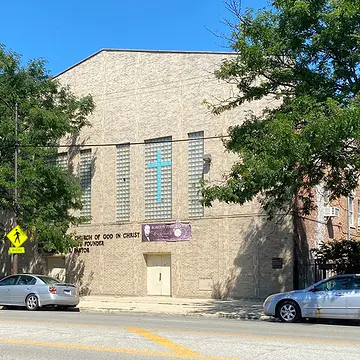
Roberts Temple Church of God in Christ
(Chicago, Illinois)
Emmett Till’s murder at the hands of two white men catalyzed the Civil Rights Movement. Roberts Temple is significant for its association with Mamie Till Mobley and Emmett Till as the site of Till’s 1955 funeral. Critical structural stabilization of the 1922 church will be completed.

Robbins Historical Society and Museum
(Robbins, Illinois)
Once the restoration and abatement work is completed, the Midcentury Modern SB Fuller Mansion will house the Robbins Historical Society and Museum, highlighting the city’s African American community and the history of Robbins Airport, the first to be owned and operated by African Americans, including the Tuskegee Airmen program.

Indiana Landmarks
(Indianapolis, Indiana)
Indiana Landmarks will create a new position to act as director of its African American Heritage Program that will identify African American historic sites and work with local constituents to preserve the places, tell their stories, and plan for their futures.
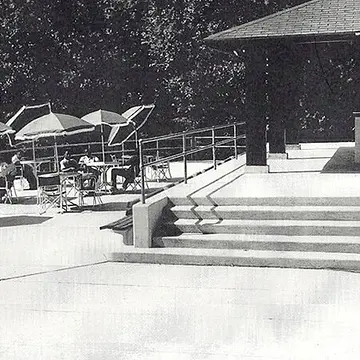
Cherokee State Resort Historical Park
(Hardin, Kentucky)
Cherokee, the first segregated state park and recreational site for Black Americans in the South, was established in 1951 and operated until 1964. Abandoned until 2002, today the park is used for weddings and other recreational activities. Funding will be used for interpretative signage and programming to tell its story.
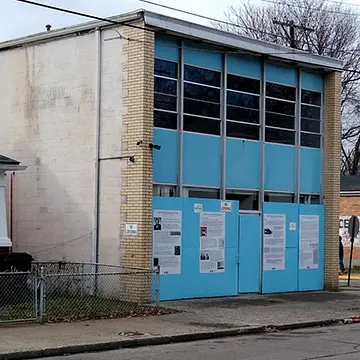
Palmer Pharmacy Building
Bluegrass Trust for Historic Preservation (Lexington, Kentucky)
The Palmer Pharmacy Building will have a feasibility study and business plan created for reuse by social service and philanthropic organizations to carry on pioneering Black pharmacist Dr. Zirl A. Palmer’s legacy of community service.

Hotel Metropolitan Purple Room
(Paducah, Kentucky)
The Hotel Metropolitan opened in 1909, serving Black travelers when lodging was segregated, and was later listed in the Green Book. It hosted notables such as Ella Fitzgerald, Duke Ellington, and Thurgood Marshall, and its Purple Room was an after-hours gathering space for musicians traveling on the “Chitlin’ Circuit” who would often play for residents and patrons alike. Restoration of the Purple Room will allow it to be used as a gathering space once more.

The League of Women for Community Service
(Boston, Massachusetts)
This project will restore the entry portico of the 1857 brownstone headquarters of the League of Women for Community Service, a historic Black women’s organization. It provided rooms to Black women college students who were not allowed to stay in dormitories due to segregation, such as Coretta Scott King when she attended the Boston Conservatory. Scott King was also courted here by her future husband Dr. Martin Luther King, Jr., who lived down the street.

African American Heritage Trail of Martha’s Vineyard
(West Tisbury, Massachusetts)
The African American Heritage Trail of Martha’s Vineyard will hire a Director of Research and Outreach to research and relay the significance of the island's historic homes to Black mobility, security, and community.

Sarah Rector Mansion
(Kansas City, Missouri)
Built in 1896, the Sarah Rector Mansion is the former home of the "first Black girl millionaire in America" after she acquired an oil-rich parcel of land as a descendant of grandparents enslaved by the Muscogee Nation. Currently in disrepair, it needs stabilization for future use and programming.
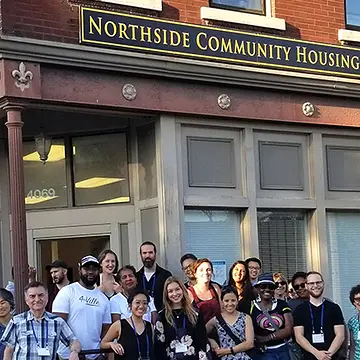
4theVille
(St. Louis, Missouri)
4theVille will hire its first Executive Director to advance efforts to preserve The Ville neighborhood’s legacy and increase awareness and support of its landmarks and history.

Save Harlem Now!
(New York, New York)
Save Harlem Now! will hire its first Executive Director to provide administrative, management, and organizational support to further its mission to protect Harlem's built environment and preserve its history.
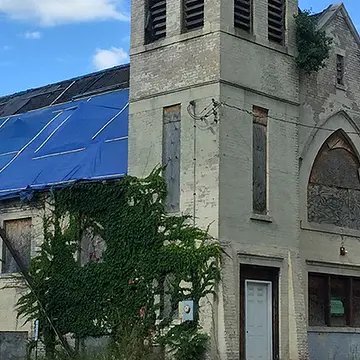
People’s AME Zion Church
The People’s Community Development Corporation (Syracuse, New York)
Built in 1910-11 and designed by Wallace Rayfield, the second licensed Black American architect in the U.S., the People's AME Zion Church—Syracuse’s oldest standing African American church structure—needs restoration and stabilization of its exterior.
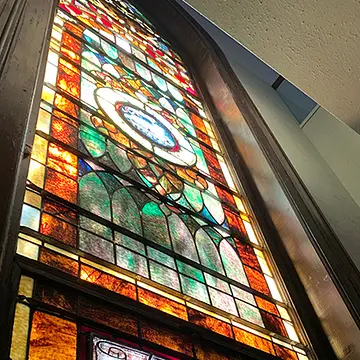
Hayti Heritage Center
St. Joseph’s Historic Foundation (Durham, North Carolina)
The Hayti Heritage Center, a cultural arts and arts education venue, is housed in the historic St. Joseph’s AME Church, constructed in 1891. The grant will help repair its stained-glass windows, doors, and original wooden pews.

North Carolina African American Heritage Commission
(Raleigh, North Carolina)
The North Carolina African American Heritage Commission, working in conjunction with the South Carolina African American Heritage Commission, will document and map Green Book sites in both states, developing a model for a national Green Book sites marker and digital mapping program.
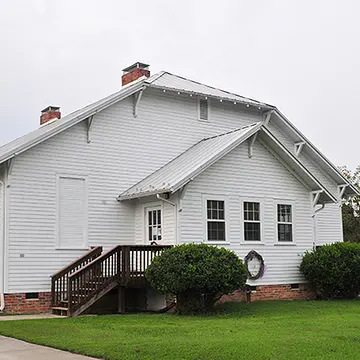
Walnut Cove Colored School
(Walnut Cove, North Carolina)
To honor the 100-year legacy of the Walnut Cove Colored School, built in 1921 as a five-classroom Rosenwald School, a long-term strategic plan will be developed for its continued preservation.
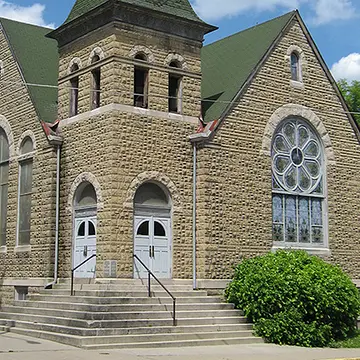
Mount Zion Baptist Church
(Athens, Ohio)
Historic Mount Zion Church, the last remaining Black-owned and -built historic building along the Southeastern Ohio River Valley’s Underground Railroad corridor, will be restored and repurposed as a regional Black artistic, cultural, and economic hub.
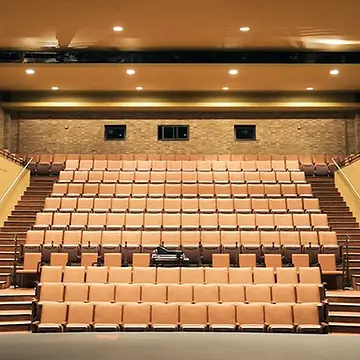
Karamu House
(Cleveland, Ohio)
The apartment residence of poet and playwright Langston Hughes at Karamu House, America’s oldest producing African American theater, will be restored for use as short-term housing for emerging artists of color to be artists-in-residence.

Threatt Filling Station
(Luther, Oklahoma)
Constructed c. 1915 and still family-owned, the Threatt Filling Station was likely the first and only Black-owned and operated gas station on Route 66. A refuge for Black travelers during the Jim Crow era, its farm also reportedly served as a safe haven for families fleeing the 1921 Greenwood Massacre in Tulsa. The filling station will be restored for use as an interpretive and visitor’s center.
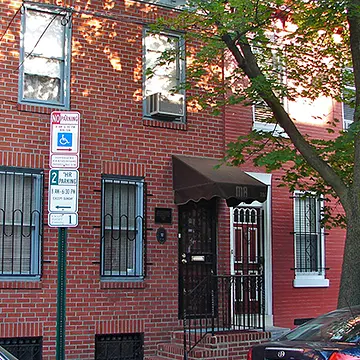
National Marian Anderson Historical Society and Museum
(Philadelphia, Pennsylvania)
Known for her stirring performance on the steps of the Lincoln Memorial in 1939, singer Marian Anderson’s home in Philadelphia will undergo restoration to its exterior, including replacing deteriorating bricks, roof, and windows.
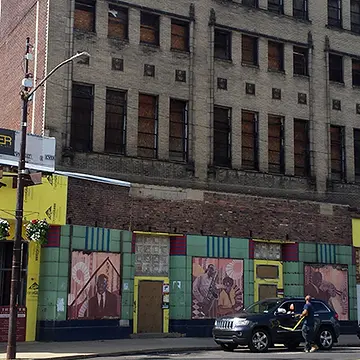
New Granada Theater
Hill CDC (Pittsburgh, Pennsylvania)
Constructed in 1928 by Black American architect Louis Bellinger, the Art Deco New Granada Theater and its ballroom were fixtures of Pittsburgh’s jazz era scene with performers such as Cab Calloway and Duke Ellington, who was declared the “King of Jazz” there. Facade restorations will enable it to be included in a redevelopment project that will revitalize the Hill District and its Centre Avenue commercial and cultural corridor, anchored by Black artists and Black-owned businesses.
National Negro Opera Company
(Pittsburgh, Pennsylvania)
Founded in 1941 by Mary Cardwell Dawson, the National Negro Opera Company was the first Black-owned opera company in America. Funds will be used to develop a feasibility study and business plan to define programming options and earned revenue models that activate reuse and sustain operations at its former offices and studios, constructed in 1908.
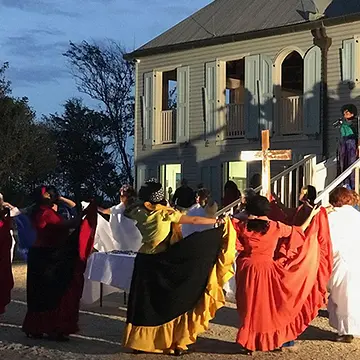
Para la Naturaleza
(San Juan, Puerto Rico)
Cultural and conservation organization Para la Naturaleza will work with and engage local descendant communities to conduct research to strengthen interpretation of Hacienda La Esperanza’s enslaved persons and their story after abolition, as well as spark future dialogue about slavery’s legacy in Puerto Rico.
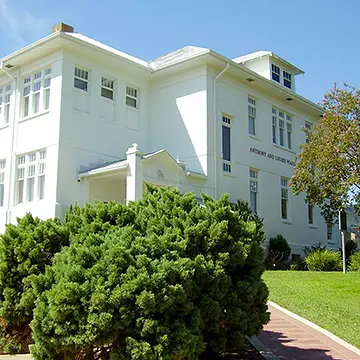
Huston-Tillotson University
(Austin, Texas)
Constructed in 1914 by Black students trained on campus, the Old Administration Building’s windows and rotten wood will be removed and replaced. It still serves as a campus administration building and as a visitor’s center for the city of Austin.

Descendants of Olivewood Cemetery
(Houston, Texas)
A historic African American cemetery in need of environmental justice, Olivewood Cemetery is subject to flooding and erosion due to commercial development runoff that has destroyed a number of burial plots. A master drainage plan will be created to mitigate further damage.
Houston Freedmen’s Town Conservancy
(Houston, Texas)
In 1865, formerly enslaved persons established the community of Freedmen’s Town at the end of the Civil War. The Houston Freedmen’s Town Conservancy will hire a Manager of Learning and Engagement to share Freedmen’s Town’s vision with key stakeholders and develop, implement, and manage communications and community engagement.

Fort Monroe Foundation
(Fort Monroe, Virginia)
Fort Monroe has commissioned a memorial honoring the humanity of the first captive Africans who were enslaved by the Portuguese and then taken by English privateers to the British Colonies at Point Comfort in 1619. The grant will assist Fort Monroe and its partners to design an interpretive plan that contextualizes the people and events of 1619 from a global perspective.
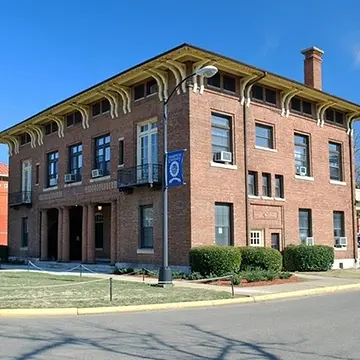
Hampton University
(Hampton, Virginia)
On the second floor of Clarke Hall, a 1913 building on Hampton's campus, artist Charles White's 1943 mural “The Contribution of the Negro to Democracy in America” is painted. Installing a HVAC system will help towards maintaining an environment for its future conservation.
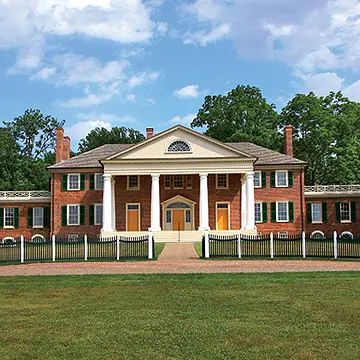
Montpelier Descendants Committee
(Orange, Virginia)
The Montpelier Descendants Committee will create a master project plan for their Arc of Enslaved Communities project, a descendant-led framework for the research, interpretation, physical discovery, and promotion of sites and projects centered on the contributions of the enslaved in Virginia during the Founding era.

Firestation 23
Byrd Barr Place (Seattle, Washington)
Sign up for email to stay connected with our work to protect sites of Black history.
With $50 million of funding, the Action Fund is the largest preservation effort ever undertaken to support the longevity of African American historic sites. This year’s announcement represents the largest single disbursement in the Action Fund’s four-year history.
The Action Fund has grown at a blistering pace since its inception in 2017. In just 3 years it had raised nearly $30 million due to primary support from The Andrew W. Mellon Foundation and the Ford Foundation. This year, the fund nearly doubled in size when philanthropists MacKenzie Scott and Dan Jewett announced a $20 million grant to the Action Fund. The gift acknowledges the power of preservation as a form of equity and asserts the importance of Black history as a vital force in the American cultural landscape.
Scott joins this year’s lead funder, The Andrew W. Mellon Foundation, with additional gifts from The William R. Kenan, Jr. Charitable Trust, the Chapman Foundation, and an anonymous donation in memory of Ahmaud Arbery.
.webp)


